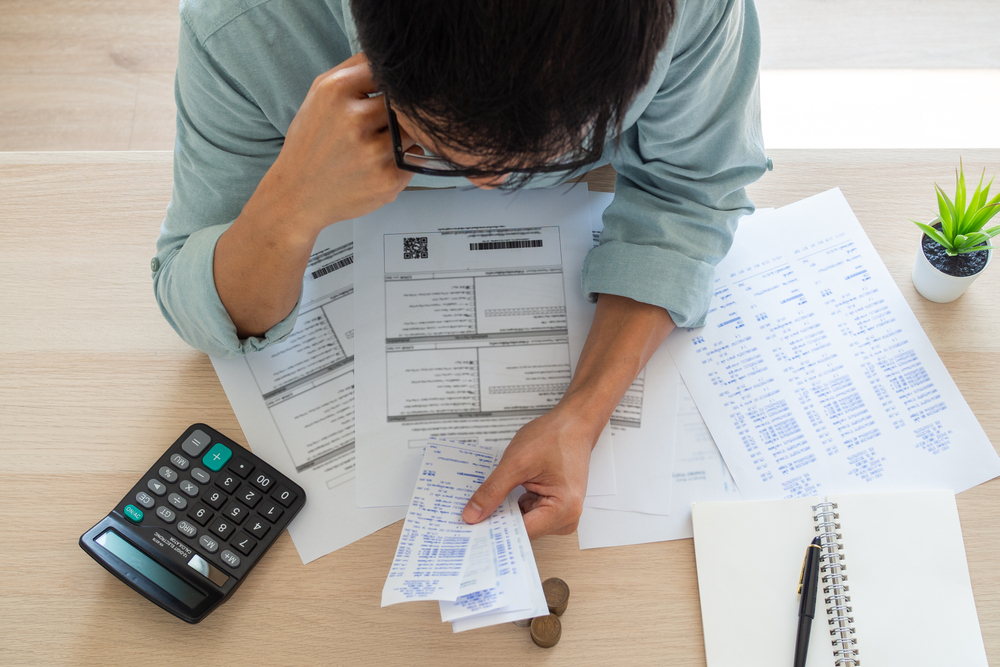Compare Debt Solutions & Find Your Way Out of Debt

If you are swamped by unaffordable debt, don’t despair. Here are practical solutions for debt problems, from the least to most drastic. One or more of them should work for you.
What Are Debt Solutions?
Your best debt solution depends on the extent of your debt, the cause of your debt, and your ability to repay your debt. Standard methods for dealing with your liabilities include:
- Snowball or waterfall
- Debt consolidation loans
- Credit counseling
- Debt management plans (DMPs)
- Chapter 13 bankruptcy
- Debt Settlement
- Chapter 7 bankruptcy
Before tackling your indebtedness, understand these solutions and determine which is right for you.
Snowball or Waterfall
The snowball and the waterfall are two ways consumers can structure credit card repayment. The snowball method involves making minimum payments on your accounts except for the one with the smallest balance. Throw everything you can at that card to pay it off as soon as possible. Then, take what you were paying toward the first account and aim for the next-smallest bill, and so on, until you clear your card balances.
The waterfall is similar, except that you pay off the account with the highest interest rate first, then the next-highest, and so on. These are great methods for people who can afford to repay their accounts, and who can’t benefit from a debt consolidation loan.
Debt Consolidation Loans
Debt consolidation means restructuring what you owe. You take out a new loan with better terms (a lower monthly payment or interest rate, for instance) and use it to pay off your existing debts. The loan can be a balance transfer credit card, a personal loan, a home equity loan, or other product.
Debt consolidation loans can simplify your bill paying because you replace several accounts with one creditor. It can improve your FICO score by lowering your credit utilization ratio. And it can make your bills more affordable by reducing your interest rate, lowering your payment, or both.
Credit Counseling
Debt consolidation only works if you address the reason that you got into debt in the first place. If it was an emergency like a medical situation or a job loss, that’s one thing. If it’s because of an overspending habit, complete credit counseling before consolidating your debt.
Credit counselors from a reputable non-profit can help you create and stick to a budget and work through your reasons for excess spending. Credit counselors may recommend a debt management plan as part of their services.
Debt Management Plan (DMP)
A debt management plan can help you afford your monthly payments and pay off your balances. Your credit counselor reviews your income and monthly payments and creates a custom plan for you. You make a single payment each month into the plan, and your counselor distributes that amount among your creditors.
Your counselor will contact your creditors and negotiate more affordable terms — lower interest rates, reduced payments, and waived penalties. Your creditors may even be willing to knock off some of what you owe. DMPs are similar to Chapter 13 bankruptcy, except the creditors’ participation is voluntary, and it takes place outside the court system. That’s nice because there is no public record.
A DMP doesn’t appear on your credit report, but creditors may report that you are not repaying according to the original terms of your loans. It’s a good solution if you can’t afford or qualify for a debt consolidation loan. However, make sure you can afford the payments. And if you can’t clear your debts in five years or sooner, some experts recommend that you consider bankruptcy.
Chapter 13 Bankruptcy
Chapter 13 bankruptcy is similar to a DMP. You file for bankruptcy protection and propose a repayment plan that you can afford. Once a bankruptcy judge or trustee approves your plan, you make monthly payments to the trustee. He or she then distributes your payment among your creditors.
There are a few differences between Chapter 13 and a DMP:
- Your creditors don’t get to opt out. If the judge approves your plan, creditors can’t sue you for additional money.
- Most Chapter 13 plans require you to make monthly payments for a maximum of five years. Any remaining debt is discharged.
- Chapter 13 bankruptcy stops your accounts from accruing interest and penalties.
- Amounts discharged in bankruptcy are not taxed, while balances forgiven outside the court system are taxable.
- Chapter 13 costs significantly more to file — ranging from a few hundred dollars for a simple DIY to thousands if you hire an attorney for a complicated filing.
- You must submit tax returns every year to the trustee. If your income changes significantly, the court may alter your monthly payment.
Chapter 13 bankruptcy has a few advantages over other solutions. You may be able to discharge debts that exceed your ability to repay them in five years, tax-free. You’ll pay less because bankruptcy suspends interest and penalties. And Chapter 13 protects your assets. It’s a good solution if you earn sufficient income to satisfy the court. However, Chapter 13 is complicated and can be expensive to file. And it’s a public record that stays on your credit report for up to seven years.
Debt Settlement
You might be surprised to see debt settlement listed as more drastic than Chapter 13 bankruptcy. That’s because debt settlement is riskier, potentially more expensive, and can easily damage your credit score even more than bankruptcy. Debt settlement is similar to a Chapter 7 bankruptcy in that you pay less than the amount owed to wipe out a balance.
Debt settlement means offering a partial sum to your unsecured creditors as payment in full. You put together a lump sum that covers at least 25% of what you owe. Then you contact your creditors and offer them, say, 25 cents on the dollar. You want to get all creditors on board before releasing the money.
Many people don’t have a ready sum of money, so they stop making payments to their creditors and put that money aside until they have enough to make an offer. The idea is to make the creditor nervous about repayment while saving your lump sum.
That’s where debt settlement gets risky, however, because creditors might not accept your offer. They may contact you about your debt constantly, and might also sue you. If you lose, you’ll owe your balance plus penalties and court costs. Your credit score will sustain massive damage if you miss months of payments on several accounts.
Debt settlement companies, if you use them, typically get 25% of the total debt if you approve the settlement that they negotiate. And whatever your creditors write off is taxable income. So if you want to clear $25,000 of debt, you might offer $6,250 (25%). If you’re in a 25% tax bracket, and you use a debt settlement company, you could pay the creditor $6,250, the settlement company $6,250, and $4,687.50 in taxes (25% of the $18,750 forgiven debt). So you’d save $7,812.50.
The advantage of debt settlement, if you can pull it off, is that it’s outside the court system. So there is no public record of how you cleared your debts. And you’re in control and can decide how much you want to offer.
Chapter 7 Bankruptcy
Chapter 7 bankruptcy is the last resort and the most drastic solution. A Chapter 7 filing creates a public record for creditors, insurers, employers, and the public to see. It does major damage to FICO scores and can remain on your credit report for up to ten years.
Chapter 7 is only available to those who can pass a means test. The court examines your income, assets, and debts, and if you earn enough income to repay at least some of your debt, you’ll have to file Chapter 13. But if you qualify for a Chapter 7, you can wipe out balances quickly and the forgiven amounts are tax-free. Note that Chapter 7 bankruptcies won’t discharge secured accounts like mortgages and auto loans — your creditors will repossess the car or foreclose on the house.
With a Chapter 7 bankruptcy, the bankruptcy court takes all non-exempt assets and sells them. Then, it distributes the proceeds to your creditors as payment in full. You can keep certain assets like work tools, some retirement accounts, or a modest car. The exemptions vary by state.
Debt Solutions: Sooner Is Better Than Later
The most important tip for getting out of crippling debt is to take action as quickly as possible. Much of the damage to credit scores occurs as consumers struggle to pay their bills — every missed payment delivers a knock-out punch to your FICO scores. While even a bankruptcy won’t kill you if you pay your accounts on time right up to the filing date.
In addition, taking the bull by the horns early allows you to deploy a less-drastic, less costly solution like debt consolidation or credit counseling. If you wait until the collectors are hounding you into court, financial recovery could be years away.
Gina Freeman
Gina Freeman is a personal finance specialist with AmONE. Her career has covered business credit, bankruptcy, tax accounting, and mortgage financing, and she has been a finance writer or editor for over 15 years. Gina is extremely consumer-focused and enjoys breaking down complex topics to help readers make confident financial decisions.











